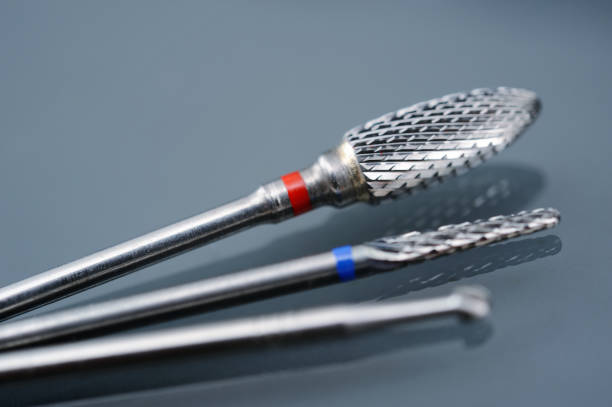Carbide cutters are essential tools used in dentistry for a variety of procedures such as crown preparation, cavity preparation, and tooth contouring. These cutters are made from a combination of tungsten carbide and cobalt that results in a hard and durable material.
Selecting the right carbide cutter for a specific dental procedure is crucial for achieving optimal results and minimizing the risk of damage to the tooth or restoration. Here are some tips for selecting the right carbide cutter:
Consider the Type of Procedure
Different types of carbide cutters are designed for specific procedures, each with its own unique shape and size.

Round carbide cutters are one of the most commonly used types of carbide cutters in dentistry. They have a round shape and come in various sizes, which makes them useful for a wide range of procedures such as removing decay, shaping cavities, and adjusting restorations. The round carbide cutter is also useful for initial tooth contouring and preparing the tooth for restoration.
Tapered carbide cutters are another popular option for dentists. They have a cone-shaped tip that gradually tapers down to a narrow point, making them ideal for precision cutting in difficult-to-reach areas. Tapered carbide cutters are often used for removing decay and shaping small cavities. They are also useful for adjusting the margins of restorations and preparing the tooth for crown placement.

Flame-shaped carbide cutters have a unique shape that resembles a flame. They are particularly useful for shaping molars and premolars due to their ability to remove large amounts of enamel and dentin quickly. The flame-shaped carbide cutter can also be used for crown preparation and contouring.
Inverted cone carbide cutters have a cone-shaped tip that is inverted, with the narrow end at the top. They are useful for removing caries and shaping cavities, particularly in hard-to-reach areas. Inverted cone carbide cutters are also useful for adjusting the margins of restorations and preparing the tooth for crown placement.

Pear-shaped carbide cutters have a rounded tip that tapers down to a narrow point, resembling a pear. They are often used for finishing and contouring restorations and adjusting the occlusal surfaces of teeth. Pear-shaped carbide cutters are also useful for preparing the tooth for crown placement.
Football-shaped carbide cutters have a unique shape that resembles a football. They are useful for removing large amounts of enamel and dentin quickly, making them ideal for shaping molars and premolars. Football-shaped carbide cutters are also useful for crown preparation and contouring.
Assess the Size of the Tooth or Restoration
The size of the tooth or restoration being worked on can also influence the selection of the carbide cutter. Larger teeth or restorations may require a carbide cutter with a larger head to remove material quickly and efficiently, while smaller teeth or restorations may require a smaller carbide cutter for precision cutting.
Evaluate the Location of the Tooth or Restoration
The location of the tooth or restoration being worked on can also influence the selection of the carbide cutter. For example, teeth in the back of the mouth may require a carbide cutter with a longer shank to reach difficult-to-access areas, while teeth in the front of the mouth may require a carbide cutter with a shorter shank for greater control and precision.
Consider the Material Being Worked on
The type of material being worked on can also influence the selection of the carbide cutter. For example, harder materials may require a carbide cutter with a larger grit size to remove material quickly, but a larger grit size may leave a rougher surface. Softer materials may require a carbide cutter with a smaller grit size for a smoother finish, but a smller grit size will result in a smoother surface. Grit size refers to the size of the abrasive particles on the surface of the carbide cutter.

Choose a Reputable Brand
Selecting a reputable brand of carbide cutters can ensure that you are getting a high-quality product that is designed to perform well and last longer. Look for brands that have a good reputation in the dental industry and that offer a variety of carbide cutters to choose from.
Burdental meets these criteria. With over 10 years of experience in researching and developing abrasive technology for dental, Burdental offers a range of high-quality carbide cutters that are designed to perform well and last longer. Their carbide cutters come in a variety of shapes, sizes, and grit sizes, making it easy to select the right tool for a specific dental procedure. Burdental is a reputable brand in the dental industry and is trusted by dentists worldwide for their quality products and commitment to innovation. By choosing Burdental carbide cutters, dentists can be confident that they are getting a high-quality product that is designed to meet their specific needs and deliver optimal results for their patients.
By considering these factors when selecting a carbide cutter for a specific dental procedure, dentists can ensure that they are choosing the right tool for the job and achieving optimal results for their patients.



